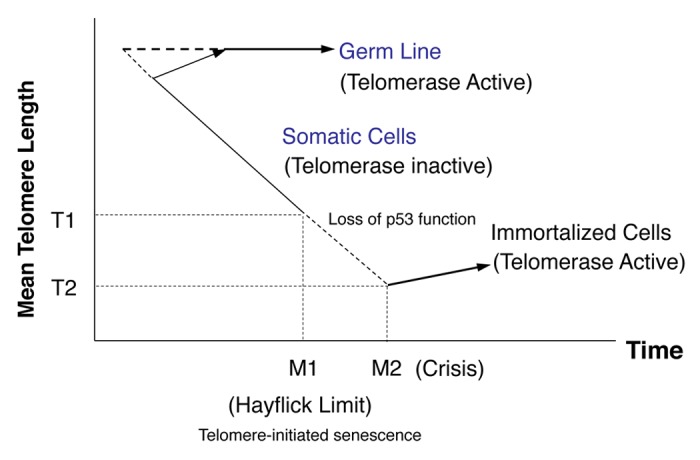
Figure 1. Schema describing the telomere hypothesis of cell aging and transformation in human cells. At the beginning of the time axis (corresponding to early embryonic development), telomerase in germ line tissues is either constitutively active (horizontal dotted line) or becomes activated at a slightly later time (diagonal dotted lines). In somatic cells, telomerase activity is repressed, and the telomeres shorten until they reach a length that signals a halt to cell division (the Hayflick Limit, which results in senescence). This barrier, called M1, can be bypassed by the administration of transforming agents, which allow telomere loss to continue until a crisis point, called M2, at which essentially all the TTAGGG sequences (and some proximal sequences) are lost. The result is cell death. Only rare cells, which have undergone a specific mutational event(s), emerge from M2 to become immortal: only these cells have stable telomeres and express telomerase (modified from ref. 113).
